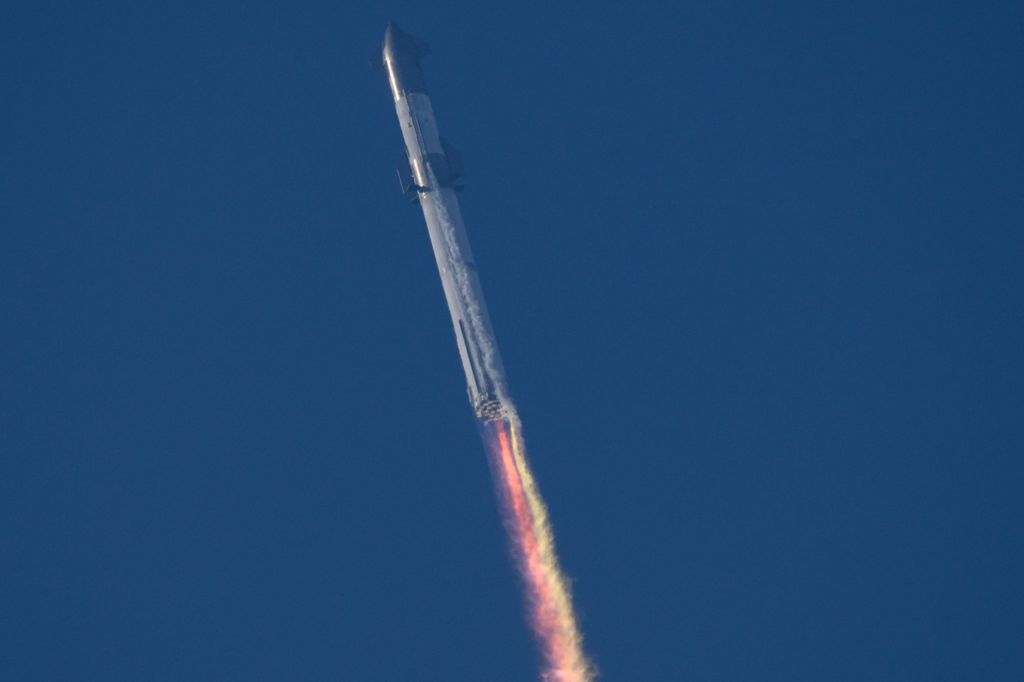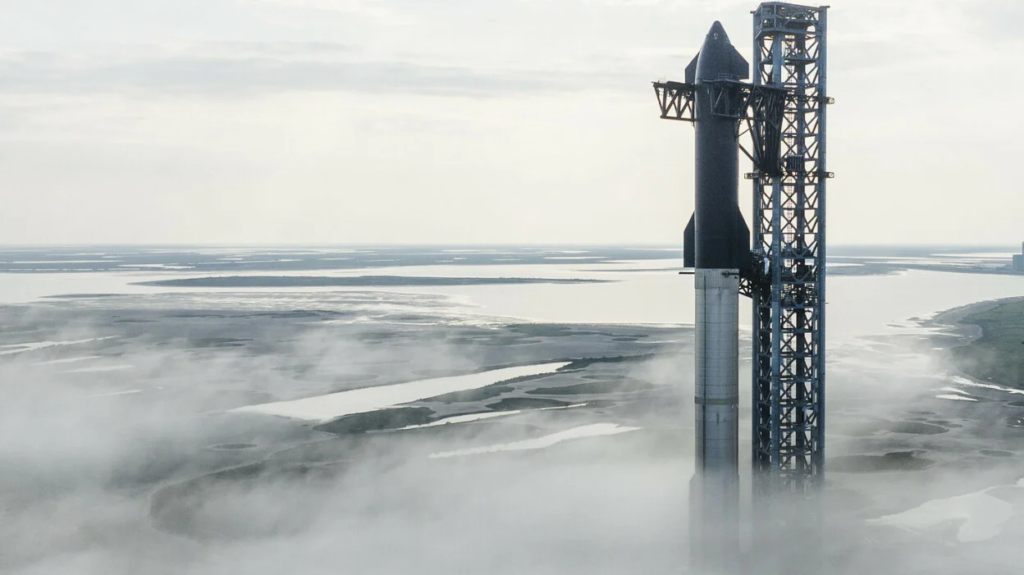
More Details On The Date Of Starship’s Second Launch
Only a few days ago we learned that SpaceX had completed all the necessary FAA corrective actions for the approval of Starship’s second launch. This was very promising news and suggested the company would revive a launch license within just weeks or days. However, new information from the FAA confirms the launch will likely take place no earlier than October and a few more approvals are still needed.
This comes in addition to new meetings between Elon Musk and the FAA, and physical progress on the Starship test article. Just earlier today SpaceX began to destack Ship 25 from Booster 9 for a possible installation of the Flight Termination System. This is one of the final pre-launch steps and only happens when the launch is right around the corner.
This being said, the company won’t be launching anything until the second test flight is approved by the FAA, when they are satisfied with everything SpaceX has done since the last flight. Here I will go more in-depth into the new comments from the FAA, other necessary approvals, physical progress, and more.
October At The Earliest

Some of the most significant updates on the second launch we got in the last few days came in the form of quotes from FAA officials. Specifically, the acting head of the Federal Aviation Administration said on Wednesday (the 13th) that the agency could advance a launch license as early as next month for Starship. She was quoted saying, “We’re working well with them and have been in good discussions. Teams are working together and I think we’re optimistic sometime next month” she said.
This isn’t the best news as it pushes back expectations quite a bit. Once the corrective actions were completed it was assumed that there would be very little if any work left before the FAA could approve the second launch. On the bright side, this quote confirms that the agency is just about ready to approve Starship and is satisfied with the 57 actions completed by SpaceX.
In addition to this, in the report from Reuters, it’s quoted saying, “SpaceX would still need a separate environmental approval from the U.S. Fish and Wildlife Service before a launch. Trottenberg did not say how long that might take.” This made it sound like Trottenberg was quoted saying that SpaceX would need a separate approval when that’s not actually the case.
After the first launch, the U.S. Fish and Wildlife Service was not happy with the result. They were quoted saying that “a 3.5-acre fire started south of the pad site on Boca Chica State Park land”. They also said that “Impacts from the launch include numerous large concrete chunks, stainless steel sheets, metal and other objects hurled thousands of feet away along with a plume cloud of pulverized concrete that deposited material up to 6.5 miles northwest of the pad site.”
On the day of the launch, researchers from the Fish and Wildlife Service were standing by to conduct impact assessments after the launch. While no wildlife was found to be killed, a senior attorney for the Center for Biological Diversity, said that post launch delays can impede biologists’ ability to conduct a thorough investigation. In a quote he said, “If there were any mortalities from the launch- particularly from concrete chunks and metal being hurled thousands of feet into National Wildlife Refuge lands that are a habitat for protected species, such as the piping plover, any carcasses would likely have been dragged off by scavengers, making it difficult to assess the full extent of impacts” they said.
In order to satisfy both the FAA and other organizations such as the U.S. Fish and Wildlife Service, changes were made such as the new water-cooled steel plate. This one addition alone should mitigate if not fully fix the problems listed after the first launch regarding the local environment.
In another relevant update, yesterday Musk was leaving a hearing regarding AI when reporters asked him a few different questions. At one point he commented that he needed to leave because of a meeting with the FAA later that day. This along with the quotes from the head of the FAA make it clear that SpaceX is doing everything in its power to try and get this process going. While it’s not entirely clear what is holding back the license between now and October, the FAA is at least closer than they have been in months to approving this launch. In the next few weeks, we can expect more updates and hopefully the eventual approval.
Physical Progress

What’s interesting is that the launch of Starship is not necessarily determined by the physical progress and development SpaceX has made on the vehicle but instead by different policies and approvals. Either way, the company has been completing some of the final physical tasks on the Starship test article to prepare it for launch. This morning for example reports came out that SpaceX was destacking Ship 25 from Booster 9.
Most believe that this de-stacking is for the installation of the Flight Termination System. In its simplest form, the FTS are explosives strategically placed within the vehicle to allow SpaceX to detonate the rocket in the air if it’s out of control. This obviously is important as you don’t want Starship turning into a missile if things were to go wrong. SpaceX will also be extra attentive to this process as during the last launch it didn’t quite work as expected.
Specifically, during the first flight, the Autonomous Flight Safety System (AFSS) automatically issued a destruct command, which fired all detonators as expected, after the vehicle deviated from the expected trajectory, lost altitude and began to tumble. Once it had activated, Starship ultimately broke up 237.474 seconds after engine ignition. However, the activation was delayed. In other words, it took longer for the rocket to explode than the company was expecting. Since then SpaceX has enhanced and requalified the AFSS to improve system reliability.
Regarding this possible installation, assuming the FAA reports are accurate and the launch isn’t for another few weeks, it’s possible this is de stack is not for the installation of the FTS. SpaceX usually does this installation right before launch or at least very soon. If they were expected to fly in October this would be considered a bit early to add the FTS system.
Besides installing the termination system, practically the only other physical test/process needed would be a final wet dress rehearsal. In that case, the company would clear the pad, fill the rocket with its propellant, and go through some of the launch procedures.
On the last Starship flight, they actually ended up doing this process multiple times after the first launch attempt was scrubbed. On April 17th SpaceX was preparing to launch when Elon informed the public that a pressurant valve appeared to be frozen, so unless it started operating soon, there won’t be a launch that day.
With about 7 minutes left on the clock, one of the commentators said, “Now the good news is everything has been going good, we’ve just been working that one issue. We are continuing the count, team will get this as an excellent opportunity to run the end to end of the system.” As far as what extra information was gained, important final steps such as the guidance system performing its final alignment, and final thrust vector control checkouts of the Raptor engines were all performed despite the scrub. In addition to the physical events that Starship performed, the crews working on Starship and in mission control got some great experience on an actual attempt with all these systems.
These final wet dress rehearsals are immensely important and something we will see very soon based on the updated launch timeline. Besides that, SpaceX is just about ready to launch. The only difference in the flight profile between this launch and the last is the initial engine ignition sequence and the stage separation method. Not long after the first Starship launch Elon was quoted saying, “For the next flight, “we’re going to start the engines faster and get off the pad faster.” From engine start to moving Starship “was around 5 seconds, which is a really long time to be blasting the pad.” Going to try to cut that time in half” he said. This means we can expect to see Starship ignite its engines and be off the ground in only seconds. This in combination with the pad changes should help avoid any pad damage.
The other change is the hot staging approach. Here Starship’s second stage engines will ignite to push the ship away from the booster. Not only this, but SpaceX has engineered a new electronic Thrust Vector Control (TVC) system for Super Heavy Raptor engines. Using fully electric motors, the new system has fewer potential points of failure and is significantly more energy efficient than traditional hydraulic systems. At the end of the day, testing development flight hardware in a flight environment is what enables SpaceX to quickly learn and execute design changes and hardware upgrades to improve the probability of success in the future. They learned a tremendous amount about the vehicle and ground systems during Starship’s first flight test and are hoping to do the same in the coming weeks.
Conclusion
SpaceX might not be launching until October at the earliest. This comes after new comments from FAA officials highlight that some work still needs to be completed. While not ideal, SpaceX is continuing to try and speed up the process and get the Starship test article ready. We will have to wait and see how it progresses and the impact it has on the space industry.
